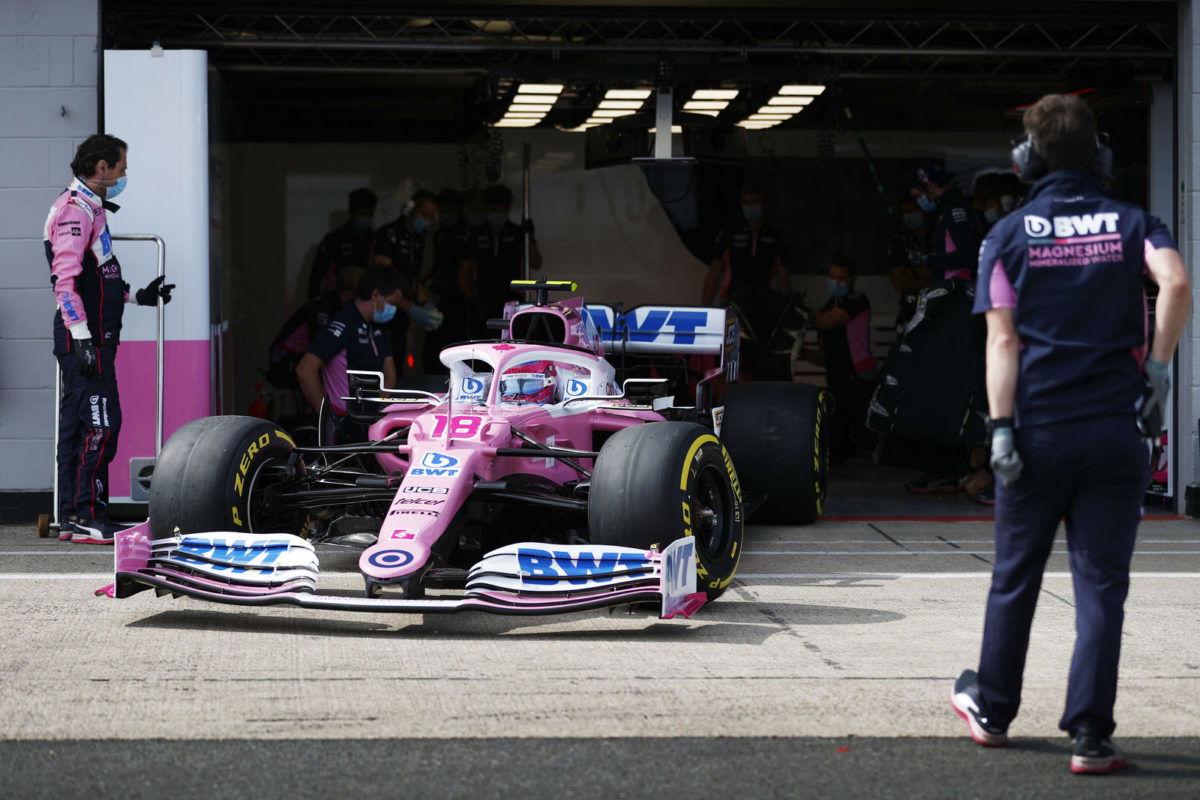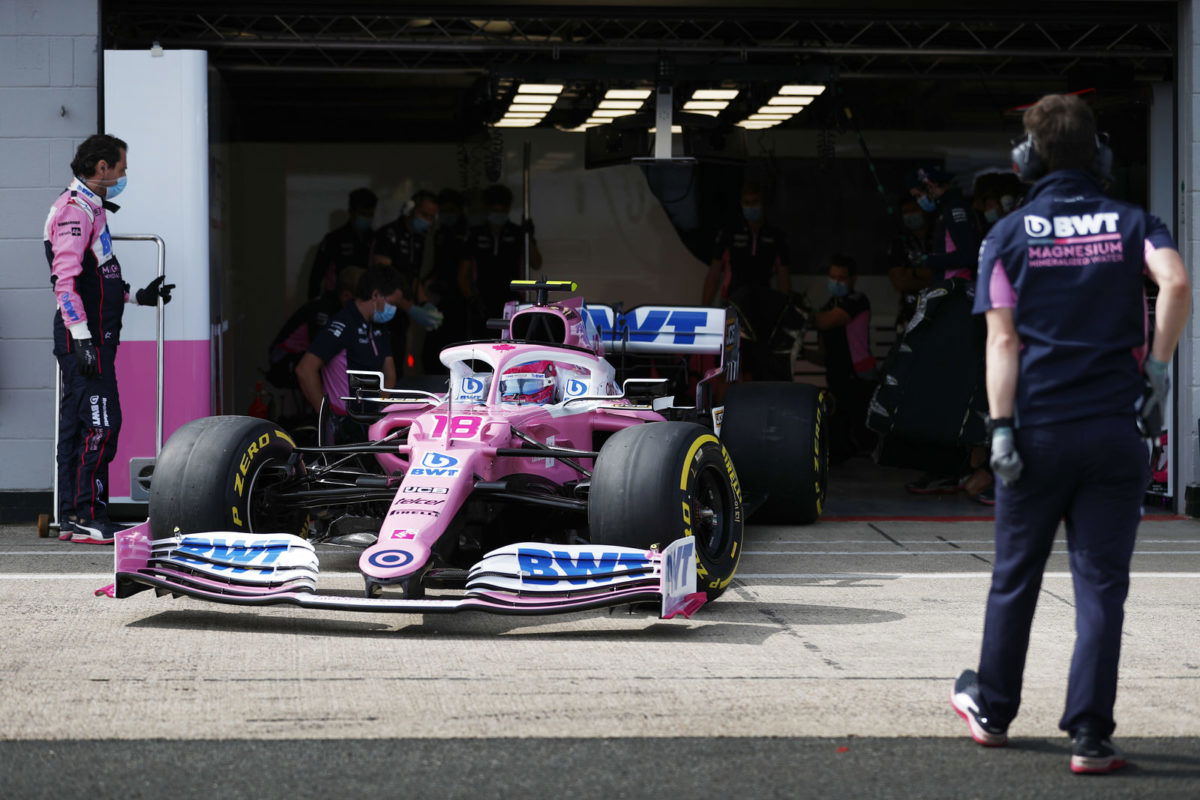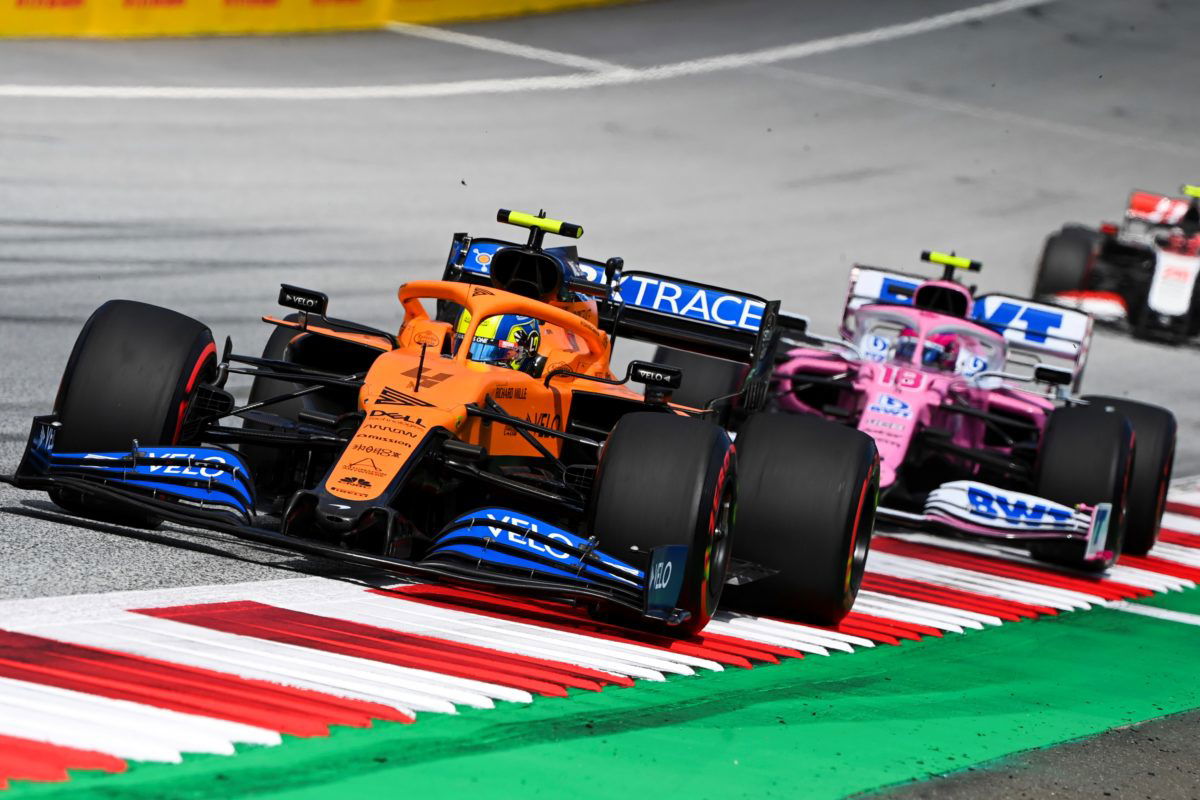

Formula 1 teams are united in their belief that new rules introduced by the FIA will prevent a repeat of the brake duct saga which dominated the start of the 2020 season.
Racing Point (now Aston Martin) last year competed with a car which shared a striking similarity to the 2019 Mercedes W10.
It led many to raise eyebrows at how such an approach was allowed under the rules, with Renault (now Alpine) taking it one step further.
The French marque protested the rear brake ducts on the Racing Point RP20, a part which had changed classification heading into the year.
That process revealed that Racing Point had shortcut the design process, using intellectual property from Mercedes that it had not previously used.
As a result, the team was docked 7.5 points per car from the Austrian Grand Prix, and fined EUR 400,000.
It was regarded as a slap on the wrist, though the loss of 15 points saw the team finish fourth in the constructors’ championship instead of third, costing it several million dollars in prizemoney.
In response to the saga, rules regarding the reverse engineering and use of intellectual property were tightened in an effort to prevent a repeat scenario.
“We’re confident the FIA will monitor that very closely and will make sure that the rules are executed as they should be,” said McLaren boss Zak Brown.
“We’re of the view that everyone should be a constructor but there is obviously the ability to collaborate but we just have to have our trust in the FIA, that they’ll monitor the situation and make sure the rules are followed accordingly.”

McLaren was one of the teams which joined Renault in appealing the initial penalty handed out to Racing Point, believing it to be insufficient.
That was ultimately withdrawn after a deal was struck with officials to have the situation regulated out going forward.
The relationship between teams has been a talking point for a number of years.
Customer cars are banned in Formula 1, though the sharing and sale of some components is allowed.
Racing Point has a technical relationship with Mercedes, buying in its engines and other components.
That entitled it to the intellectual data surrounding the W10’s brake ducts, though that was not used during the 2019 season as intended.
Instead, it was used as part of the design process for Racing Point’s 2020 car, for which it was penalised.
“I think last year we saw the regulations stretched to the limit of what’s feasible and what isn’t and I think the FIA are acutely aware and again, as the governing body, you have to trust in them to police accordingly,” reasoned Red Bull’s Christian Horner.
“I think obviously there is the topic of the 2022 car which is a clean sheet of paper and again the FIA need to be on top of ensuring that no team artificially benefits through that of a customer or affiliate or associate team.
“It’s something that we at Red Bull take very, very seriously,” he added.
“The relationship with Toro Rosso, and now AlphaTauri, has scrupulous discipline to how we operate, respectful of those rules.”

Alpine’s Laurent Rossi added: “Last year created a precedent.
“There is very clear instructions as to which parts are open and which parts are not, what is permitted or not.
“Everything is excluded for some parts, even photos and stuff, so we strongly believe that last year served this purpose and that the FIA now is very vigilant.”
Mercedes was implicated in the saga by dint of being Racing Point’s technical partner.
However, the marque did support its customer team, with Toto Wolff suggesting it had done nothing to breach the regulations.
Like his fellow team bosses, Wolff suggests the sport now needs to place its trust in the FIA to police the more stringent regulations now in place.
However, he also suggests that the benefits that come from collaboration between teams are mutual.
“I think we’ve got to trust the system,” he said.
“The regulations have been more prescriptive. By the end of last year they have been clarified.
“Everything that could have been bound to an interpretation was described in a very solid way, so everybody knows what’s on and what is not on.
“There will always be areas of collaboration between teams but they are not in areas of any IP nor any exchange of information,” he added.
“It’s down to all of the teams to perform, carry on with their own development, but there will be some infrastructure that’s being shared within the regulations and obviously that creates the positive effect of economies of scale, revenue stream for the bigger teams and fantastic state-of-the-art facilities for the other teams.
“We equally recognise a situation like McLaren has [as an independent team], that this needs to be, in a way, ring-fenced in terms of the regulations, so there’s absolute clarity what’s on and what’s not.”




















Discussion about this post